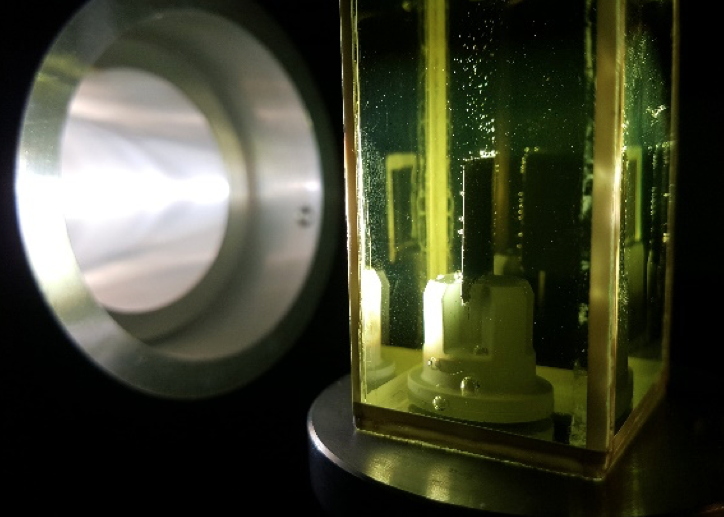The production of solar fuels, and first of all hydrogen, is an identified objective of the ecological transition. Photoelectrochemical processes offer a solution to produce green hydrogen from water and solar energy in a decentralized way, but their performance and cost still limit the exploitation of these systems on a large scale.
In collaboration with researchers at the Hanoi University of Science and Technology (Vietnam), IRIG researchers have developed an artificial sheet based on a photovoltaic core (triple junction silicon cell) by developing a photochemical process for the one-step deposition from a single precursor of the two catalysts that perform the release of hydrogen and the oxidation of water on each side of the artificial leaf. When immersed in a neutral salty medium, the monolithic device converts solar energy into hydrogen with a yield of 2%.
The optimization of these performances now requires a better understanding of the phenomena limiting the conversion steps and the measurement of The optimization of these performances now requires a better understanding of the phenomena limiting the conversion steps and, namely, the determination of the catalysis metrics on each side of the artificial leaf. The researchers at IRIG have thus instrumented the cell in a way that allows the independent measurement of the electrochemical potential of each of the catalysts, the current flowing through the cell and to quantify hydrogen production. Such an
operando characterization highlighted the impact of the defects of the protective layers of the triple junction core cell and allowed to propose ways for the optimization of the device.

The figure shows in the center the artificial leaf producing hydrogen and oxygen from water under illumination.
©Duc Nguyen Ngoc/CEA
This research project is part of the "fundamental research for energy" program from CEA and is developed, at the European level, in the context of the SUNERGY initiative and the SUNER-C project, which started on June 1, 2022 (3-year duration, budget 4 M€).
SUNERGY and SUNER-C aim to develop and strengthen the solar fuels and chemistry community in Europe and pave the way for a large-scale joint European action as a public-private partnership. CEA is a co-coordinator of SUNERGY and SUNER-C with three operational directions involved: the Direction of Fundamental Research (the lead operational direction for the CEA), the Direction of the Technological Research and the Direction for Energy.